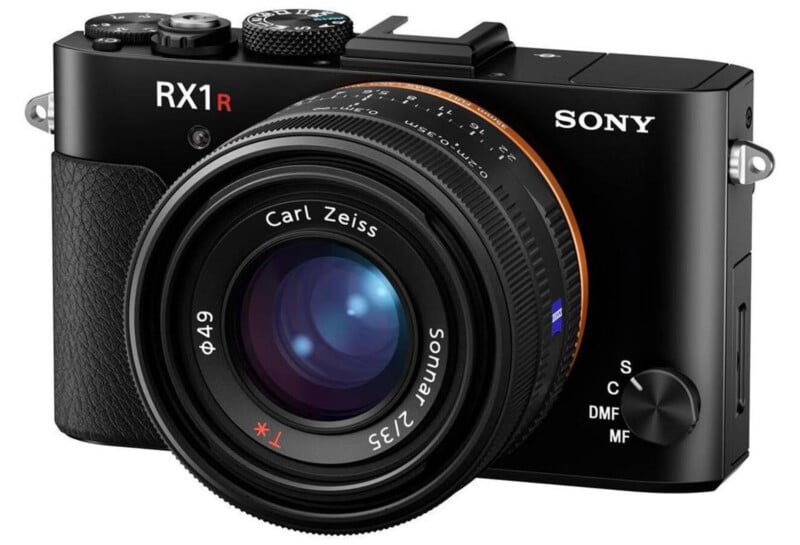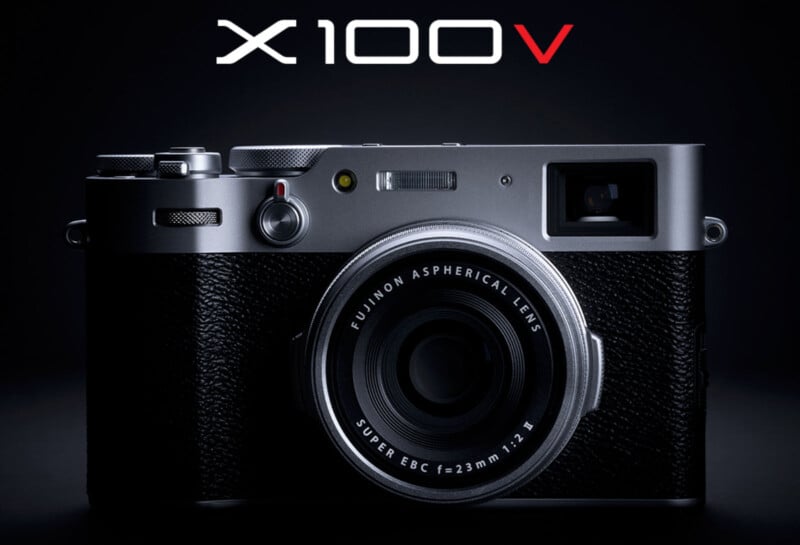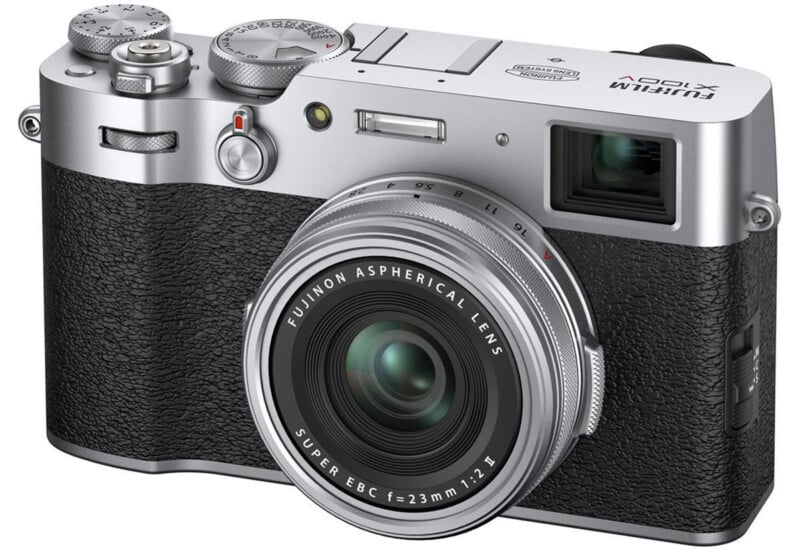Fujifilm is the Best Company to Make the Camera of my Dreams
![]()
After wrapping our awards, PetaPixel‘s staff turned its attention to another annual project, “Bold Camera Predictions.” The 2024 edition arrives later this week with the help of a special guest, but ongoing internal discussions birthed the camera of my dreams, a Sony RX1R II replacement.
Replaced way back in 2016, the Sony RX1R II was a spectacular compact full-frame camera with fantastic image quality and a stellar built-in 35mm f/2 Zeiss Sonnar T* fixed lens. I say “was” because although the camera is technically still available brand-new for an eye-watering $3,300, it is very long in the tooth. It sports the same 42.4-megapixel Exmor R CMOS sensor featured in the Sony a7R II. Yes, the a7R Mark II, which was released in 2015, and nothing now but a very distant memory. We have come a long way since the days of the a7R II.
Anyone in the industry who has spent much time around me in the last few years has had the misfortune of hearing me drone on about how Sony must release an RX1R III with its latest high-resolution 61-megapixel image sensor and an upgraded lens. Sony’s autofocus systems and AI have also come a long way, which would only help make a prospective RX1R III even better. However, my wishes have fallen on deaf and annoyed ears.

Jump ahead to this morning, when PetaPixel‘s Jordan Drake mentioned in casual conversation that a long-rumored Fujifilm full-frame camera could be a Fujifilm X100V successor. Little did Jordan know, he inadvertently planted a seed in my mind that grew rapidly into an insatiable appetite for full-frame Fuji goodness. A hope, nay, need, that is all-but-guaranteed to end in disappointment.
But Fujifilm really is the perfect company to pick up where Sony seemingly left off, which will make it hurt all the more when a full-frame X100 doesn’t arrive, year after year.
Rumors have been exceptionally persistent that Fujifilm will eventually make a full-frame camera, even if the company has said that will “never” happen. A strongly-worded proclamation I am all too happy to ignore for this article. Besides, that was in 2018. In company-speak, that was practically an eternity ago.

There are plenty of great reasons why Fujifilm would never make a full-frame equivalent to the X System of APS-C cameras. Beyond the obvious issue of heavy competition in the full-frame mirrorless camera space, there is also the GFX-sized elephant in the room.
Fujifilm has positioned its medium-format GFX cameras as a legitimate competitor to full-frame cameras. This position has only strengthened with the improved speed, autofocus performance, and video features in the latest GFX camera, the GFX 100 II. A full-frame ILC would undercut the “better than full-frame” angle that Fujifilm has taken with the GFX. Besides, would Fujifilm want to make a third lens mount? That’s a lot to juggle and would be a pretty crazy thing to do.
But you know what’s not crazy? An X100V-style camera with a full-frame image sensor and 35mm-equivalent lens. No new lens mount system here. Photographers love the X100 series for its retro style, compact size, and nice image quality. An X100 camera with a bigger image sensor and new lens would not compromise at all with style. It would likely get a bit larger and heavier but also deliver superior image quality. Overall, I think that’s a net positive.
Obviously, Fujifilm doesn’t make full-frame X-Trans image sensors, but Fujifilm has not shied away from Bayer-pattern sensors with its GFX series. For that matter, even some X Series cameras omit X-Trans sensor technology. The lack of X-Trans is not a roadblock to excellent image quality, especially when you consider how much of Fujifilm’s signature “look” is due to its optical design and brilliant Film Simulations. A full-frame camera can still have great Fuji optics and fancy film simulations even if it doesn’t have an X-Trans sensor.

At the risk of getting carried away, let’s take a beat. I cannot stress this enough: there are no worthwhile rumors about a full-frame Fujifilm camera, and indeed not that the next X100 model will sport a larger-than-APS-C sensor. In fact, there is ample, plausible evidence that the next X100 camera will use the same 40-megapixel APS-C sensor introduced in the X-H2 and X-T5 cameras.
I’m so far outside the realm of reality that this doesn’t even qualify as a “bold prediction,” which is why this pipe dream is its own article and not part of the upcoming “PetaPixel’s Bold Camera Predictions for 2024” article. While the forthcoming predictions are undoubtedly bold, they are at least somewhat tempered by the real world and some of them will likely come to fruition, audacious as they may be. At best, this editorial is a thought experiment, and even then, one driven primarily by desperate hopes.
Nonetheless, to me, a full-frame X100-series camera truly does make a ton of sense.
Fujifilm is not a semiconductor company, so it already orders image sensors from other companies (well, it’s probably only Sony Semiconductor, but I digress). Fujifilm has plenty of optical engineering chops to pull off a full-frame prime lens, especially for a fixed-lens camera. As evidenced by its truly spectacular lenses for the GFX System, Fujifilm’s engineers can work their magic for larger image sensors.
This is not a perfect idea, and there are some notable concerns, price probably being the largest among them. The Fujifilm X100V is $1,400, and while a move to a new 40-megapixel APS-C sensor may mean a slight price increase is in the offing, the next X100 camera will be nowhere near the price Sony’s RX1R II camera commands. Of course, there is also the Leica Q3, a $6,000 camera with a 60-megapixel full-frame sensor and built-in Summilux 28mm f/1.7 lens.
Nobody is keen to throw down $3,300 for 2016’s RX1R II in 2023, soon to be 2024. Further, most photographers lack the spare $6,000 required for a Leica Q3, even though it is, by all accounts, absolutely brilliant. However, these same photographers may not want an APS-C image sensor, even if it were 40 megapixels.
Concerning the Q3, a potential, albeit probably impossible, move to a higher-resolution, larger image sensor would also enable Fujifilm to introduce clever cropping modes like the ones Leica has in its Q3.
There is a genuine gap in the market, and it is one that Sony seems uninterested in filling again. As for Leica, the legendary German company operates so far outside the typical photography market that it doesn’t matter what it is up to. Leica does its own thing, for better or worse.
No company is better suited to fill the void than Fujifilm. Would a $3,000 60-plus megapixel “X200” with a new Fujinon 35mm f/1.8 lens, the latest Film Simulations, and gorgeous vintage style fly off the shelves? Probably not, but it could be a smash hit and certainly deserves to exist. If there is such a thing as a Christmas wish, this is mine for 2024 and beyond. Fujifilm, please.